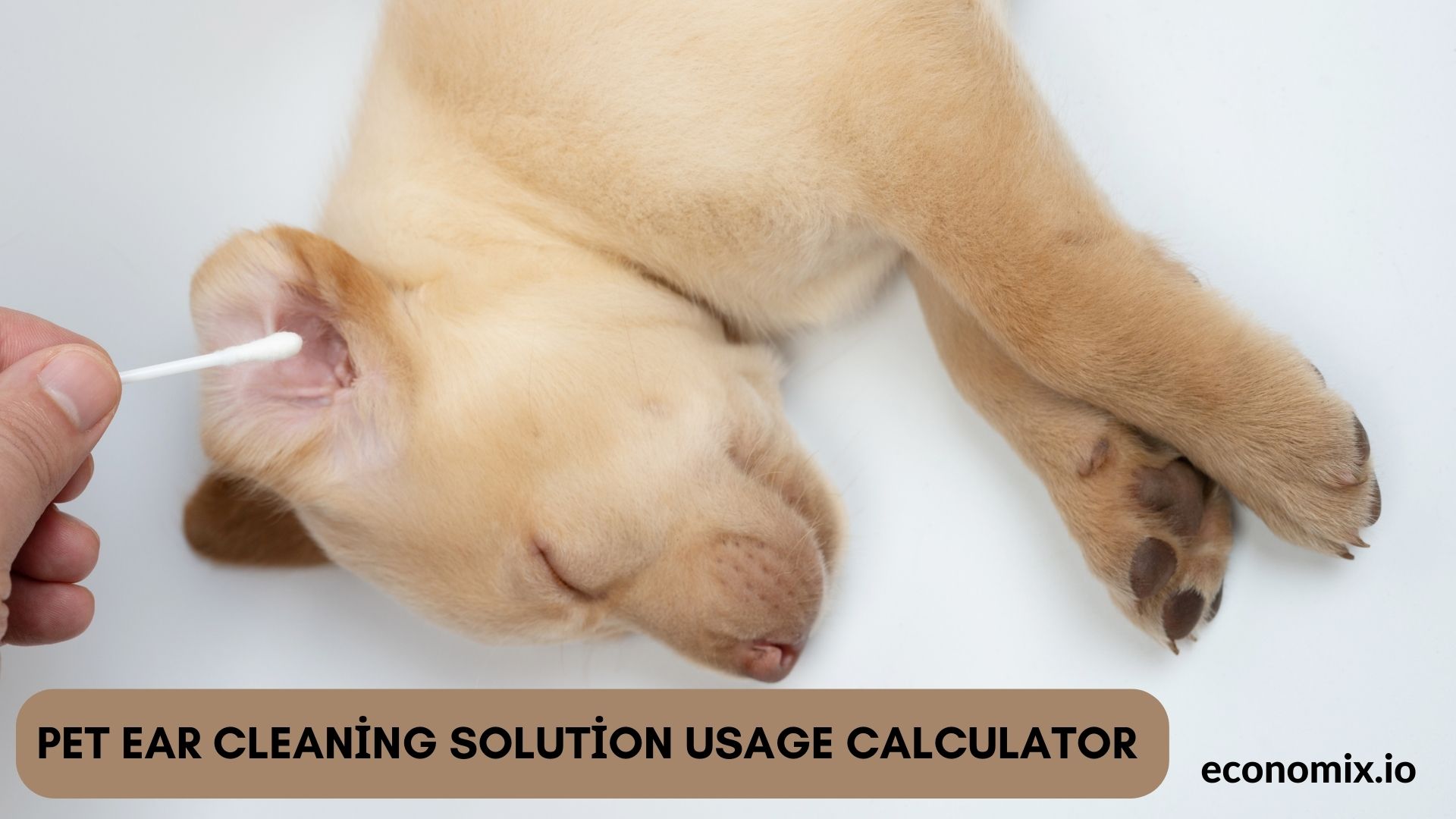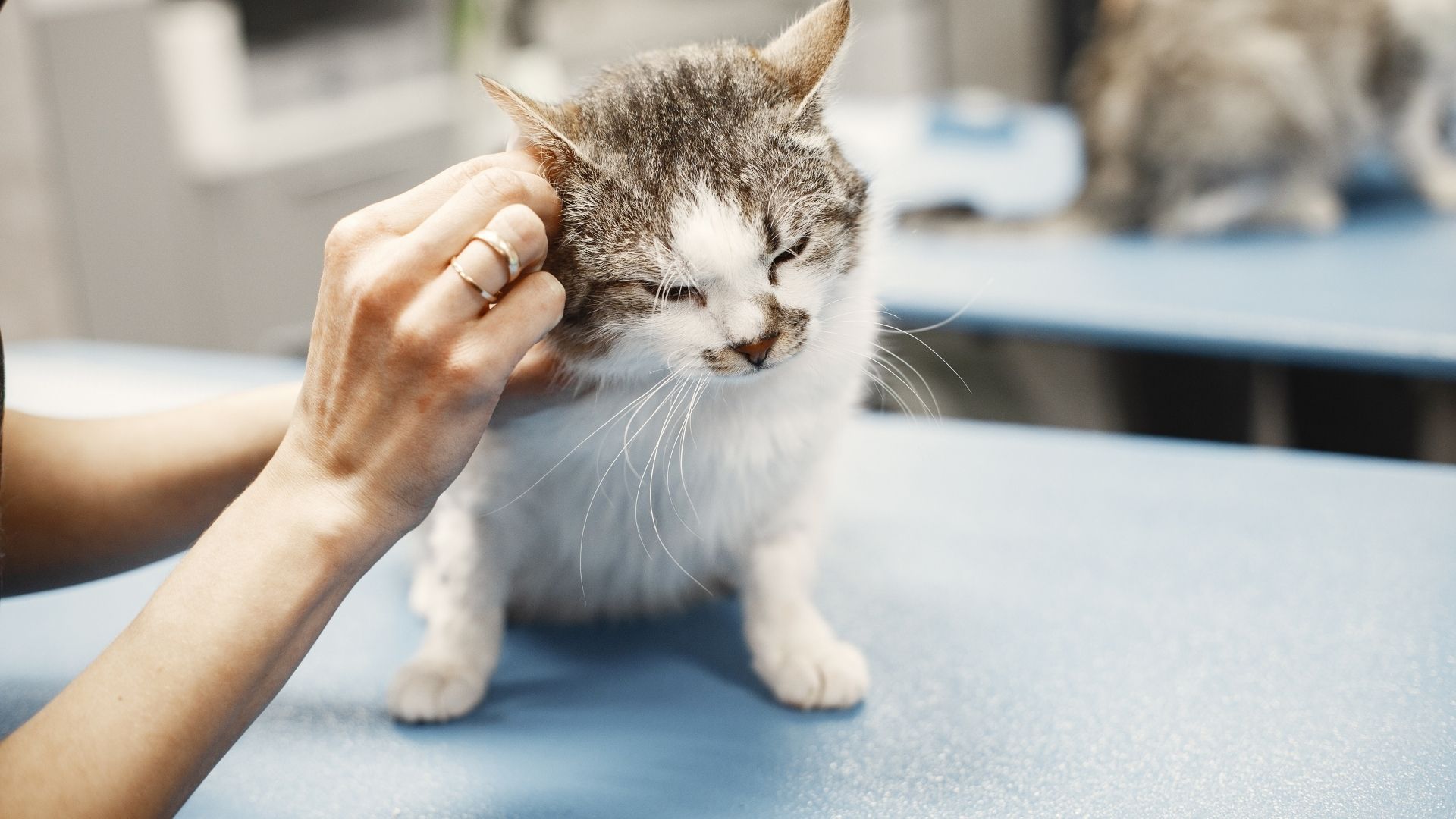Table of Contents
- Why Is Regular Ear Cleaning So Important?
- How Can the Pet Ear Cleaning Cotton Swab Usage Calculator Help?
- Can You Use Cotton Swabs for Pet Ear Cleaning?
- A Step-by-Step Guide to Safe Ear Cleaning
- Common Questions About Ear Cleaning
- Pairing Tools for Better Pet Care
- A Clean Start for Your Pet’s Health
Estimated reading time: 4 minutes. Last updated: December 25, 2024.
How Much Time and Supplies Does Pet Ear Cleaning Really Take?
 Taking care of your pet’s hygiene goes beyond regular
grooming.
Cleaning your pet’s ears is a vital part of their overall health,
preventing discomfort and potentially serious infections. But have
you ever wondered, “How many cotton swabs do I actually use for
cleaning my pet’s ears over a year?” The
Pet Ear Cleaning Cotton Swab Usage Calculator
answers this exact question, helping you track your supplies and
plan more efficiently.
Taking care of your pet’s hygiene goes beyond regular
grooming.
Cleaning your pet’s ears is a vital part of their overall health,
preventing discomfort and potentially serious infections. But have
you ever wondered, “How many cotton swabs do I actually use for
cleaning my pet’s ears over a year?” The
Pet Ear Cleaning Cotton Swab Usage Calculator
answers this exact question, helping you track your supplies and
plan more efficiently.
“Taking care of small things makes big things possible.”
In this post, we’ll explore the importance of ear cleaning, address common concerns, and show you how this tool can simplify your pet care routine.
Why Is Regular Ear Cleaning So Important?
Your pet’s ears are delicate and require proper care to remain healthy. Wax buildup, dirt, and moisture can lead to discomfort or infections if not addressed. Cleaning your pet’s ears helps prevent common issues like:
- Ear infections: Caused by trapped moisture or dirt.
- Redness and inflammation: Resulting from wax buildup.
- Hearing problems: In severe cases, infections can impact hearing.
According to experts at VCA Hospitals, dogs with long, floppy ears or those prone to allergies may require more frequent ear cleaning. However, over-cleaning can cause irritation, so it’s essential to find the right balance based on your pet’s needs.
How Can the Pet Ear Cleaning Cotton Swab Usage Calculator Help?
If you’re already juggling grooming schedules, vet visits, and feeding routines, keeping track of ear-cleaning supplies may seem like a small task—but it adds up over time. This tool simplifies the process by helping you:
- Track Usage: Calculate how many cotton swabs you use weekly, monthly, or even over several years.
- Plan Ahead: Avoid last-minute runs to the store by knowing exactly how many swabs to keep on hand.
- Save Resources: Understand your long-term needs, reducing waste and over-purchasing.
For example, if you clean your dog’s ears weekly and use five swabs per session, the calculator shows your total usage over time, making it easy to budget and stock up appropriately.
Can You Use Cotton Swabs for Pet Ear Cleaning?
This is one of the most commonly asked questions: “Can I use cotton swabs to clean my dog’s ears?” The short answer is: be cautious.
While cotton swabs can be helpful for cleaning the outer ear, they should never be inserted into the ear canal. Doing so risks pushing debris deeper or even damaging the eardrum. Instead, consider using cotton balls or gauze for deeper cleaning, as recommended by veterinarians.
A Step-by-Step Guide to Safe Ear Cleaning
- Gather Supplies: You’ll need a pet-safe ear cleaner, cotton balls or gauze, and optional treats for rewarding your pet.
- Inspect the Ears: Check for redness, discharge, or foul odors. If any of these are present, consult your veterinarian before cleaning.
- Apply the Cleaner: Fill the ear canal with a vet-recommended cleaning solution, and gently massage the base of the ear for 30 seconds.
- Allow Shaking: Let your pet shake their head to remove loosened debris.
- Wipe Gently: Use a cotton ball or gauze to clean the outer ear and visible parts of the canal.
Remember, regular ear inspections are just as important as cleanings. This helps you catch early signs of infection or irritation before they worsen.
Common Questions About Ear Cleaning
How often should I clean my pet’s ears?
This depends on your pet’s breed, activity level, and overall health. Dogs with floppy ears or those who swim often may need weekly cleanings, while others may only need monthly maintenance.
Can I use household items like hydrogen peroxide?
No, household solutions like hydrogen peroxide or alcohol can irritate your pet’s sensitive ears. Stick to vet-approved ear cleaners for safe and effective results.
What should I do if my pet resists ear cleaning?
Start slow and use positive reinforcement, like treats or praise, to make the process more comfortable. If your pet shows signs of pain, consult your veterinarian.

Pairing Tools for Better Pet Care
The Pet Ear Cleaning Cotton Swab Usage Calculator is just one tool to help manage your pet’s care. You can pair it with others, like the Animal Care Tools page for more pet-related calculators, or the Animal Gestation Calculators if your pet is expecting.
These tools make caring for your pet more efficient, allowing you to focus on what truly matters: the bond you share.
A Clean Start for Your Pet’s Health
Keeping your pet’s ears clean is more than just a grooming task—it’s an act of love that ensures their comfort and health. By tracking your cotton swab usage with the Pet Ear Cleaning Cotton Swab Usage Calculator, you can simplify this process, save time, and ensure you’re always prepared.
Start using the calculator today and take another step toward being the best pet parent you can be!